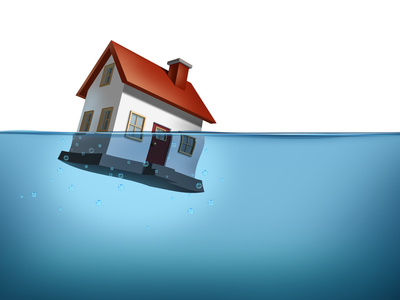 If you are buying a home in a Flood plain there are a number of things you should know. Flood insurance rates are currently at some of the highest in history. In 2012, the U.S. Congress passed a law phasing out many of the available subsidies for homes in flood plains and allowing insurance companies to substantially increase rates year over year. In 2014, Congress passed a new version of the law aimed at reducing the previous likelihood of major increases and reinstating some of the subsidies.
If you are buying a home in a Flood plain there are a number of things you should know. Flood insurance rates are currently at some of the highest in history. In 2012, the U.S. Congress passed a law phasing out many of the available subsidies for homes in flood plains and allowing insurance companies to substantially increase rates year over year. In 2014, Congress passed a new version of the law aimed at reducing the previous likelihood of major increases and reinstating some of the subsidies.
The exact ramifications of these changes are up in the air, and it’s anyone’s guess where premiums will end up. Either way, this isn’t great news for anyone buying or selling a home in a flood zone.
Why Lenders Care About Flood Insurance
Flood damage isn’t covered by regular homeowner’s policies (hazard insurance); a separate insurance product is necessary. If you’re purchasing a home in an area at high risk of flooding and using a federally regulated or insured mortgage product (say, an FHA or VA loan), you will be required to purchase flood insurance. Even a small amount of flooding can cause thousands of dollars of damage to a home. The lender needs to be sure that if a home undergoes expensive damage, homeowners will not simply walk away, abandoning the home and mortgage. Simply put, the lender wants to eliminate their risk.
How To Tell If A Home Is In A Flood Plain
Discussions regarding flood insurance are sometimes put off until well into the buying process, even until after a home is under contract. Additionally, some properties that do not appear to be at risk for flooding are actually rated high risk by FEMA. While a seller’s disclosure may state if a home is in a flood plain, that doesn’t always happen, and you can’t depend on the information being accurate. Luckily, North Carolina homebuyers have a due diligence period once a home is under contract, and researching flood plain status should be one of the things done during this time. The federal website FloodSmart.gov can tell you the flood risk of any property by address. Homes located in high-risk areas will almost certainly be required to carry flood insurance. The maps used to make these determinations (Flood Insurance Rate Maps, or FIRM) are available for viewing at FEMA.gov.
The Bottom Line for Buyers
The requirement to carry flood insurance on a property can add significantly to a buyer’s housing costs, and it’s something that should be thoughtfully considered while home searching. Flood insurance premiums are federally regulated, so there’s not going to be much difference between insurance providers. On the positive side, a home that requires flood insurance will likely be priced to reflect that in its value. If not, this can be a negotiating point. Whatever the case, the fact that a property requires flood insurance shouldn’t be a last-minute surprise. Use the due diligence period properly, and do your best to find out everything you need to know about a property before you buy.
Posted by Larry Tollen on
Leave A Comment